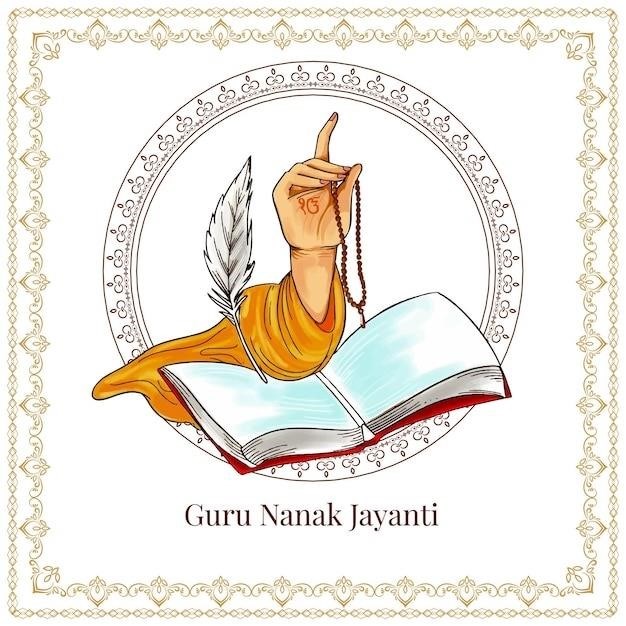Vedic Scriptures in PDF Format
The Vedic scriptures are a treasure trove of ancient wisdom and knowledge, encompassing a wide range of topics from philosophy and spirituality to rituals and cosmology. These scriptures are available in PDF format online, providing a convenient and accessible way to explore this rich tradition. Several websites offer free downloads of Vedic texts, including the Vedas, Upanishads, Bhagavad Gita, and other important scriptures. This allows individuals to delve into the depths of these sacred writings and gain insights into the ancient wisdom of Hinduism.
Introduction to Vedic Scriptures
The Vedic scriptures, a cornerstone of Hinduism, are a vast and ancient body of knowledge originating in ancient India. These texts, composed in Vedic Sanskrit, represent the oldest layer of Sanskrit literature and are considered the foundational scriptures of Hinduism. The term “Veda” itself translates to “knowledge” or “wisdom,” reflecting the profound insights and teachings contained within these sacred writings. The Vedic scriptures encompass a wide range of topics, including philosophy, cosmology, rituals, mythology, and spiritual practices. They offer a glimpse into the ancient Indian worldview and provide a framework for understanding the universe, the human condition, and the path to spiritual liberation.
The Vedas are believed to have been revealed to sages through divine inspiration and passed down orally for generations before being committed to writing. They are revered as the ultimate source of authority and knowledge in Hinduism, shaping the beliefs and practices of millions of Hindus across the globe. The Vedic scriptures have had a profound influence on Indian culture and society, inspiring countless works of art, literature, music, and philosophy.
The study of the Vedic scriptures is considered a journey of self-discovery and spiritual growth. They offer a roadmap for understanding the nature of reality, the purpose of life, and the means to achieve liberation from the cycle of birth and death. The Vedic scriptures invite us to contemplate the mysteries of existence, to cultivate inner peace and wisdom, and to connect with the divine.

The Four Vedas
The Vedic scriptures are traditionally categorized into four main branches, known as the Four Vedas⁚ the Rig Veda, the Sama Veda, the Yajur Veda, and the Atharva Veda. These four Vedas represent the core of Vedic knowledge and are considered to be the most authoritative texts in Hinduism.
The Rig Veda, the oldest of the four, is primarily a collection of hymns and praises dedicated to various deities. It offers insights into the cosmology, mythology, and rituals of the Vedic period. The Sama Veda focuses on chanting and melodies, using verses from the Rig Veda for liturgical purposes. The Yajur Veda, on the other hand, contains rituals and formulas for various ceremonies, including sacrifices and offerings. The Atharva Veda, the youngest of the four, explores a wider range of themes, including magic, healing, and protection.
Each Veda is further divided into four parts⁚ Samhita (collection of hymns and verses), Brahmana (commentary on rituals), Aranyaka (forest texts containing philosophical discussions), and Upanishad (philosophical treatises on the nature of reality and the soul). These four parts together provide a comprehensive understanding of Vedic knowledge, encompassing both the practical aspects of rituals and the profound philosophical insights that underpin the Vedic worldview.
The Rig Veda
The Rig Veda, considered the oldest and most important of the four Vedas, stands as a cornerstone of Vedic literature. This vast collection of hymns, prayers, and rituals, composed in Vedic Sanskrit, offers a glimpse into the beliefs, practices, and worldview of ancient Aryan society. The Rig Veda is structured into ten books or mandalas, each containing a diverse array of hymns addressed to various deities.
These hymns, often characterized by their poetic beauty and profound insights, express a wide range of themes including creation, cosmology, natural phenomena, social order, and the relationship between humans and the divine. The Rig Veda also features numerous myths and legends, providing valuable insights into the cultural and spiritual beliefs of the Vedic period.
The hymns of the Rig Veda are not merely poetic expressions but are believed to possess a transformative power, capable of invoking blessings, warding off evil, and fostering spiritual growth. Their recitation and chanting are considered essential elements of Vedic rituals and ceremonies, playing a vital role in connecting individuals with the divine and upholding the cosmic order.
The Sama Veda
The Sama Veda, often described as the “Veda of melodies,” stands apart from the other Vedas due to its focus on music and chanting. This Veda is primarily a collection of hymns and chants meant to be sung during rituals and ceremonies. Its hymns are largely drawn from the Rig Veda, but they are meticulously arranged and modified to create a rich and harmonious musical experience.
The Sama Veda is deeply intertwined with the practice of chanting, which is believed to have a powerful spiritual effect. The melodic recitation of these hymns is considered a form of devotional worship, capable of connecting individuals with the divine and fostering a state of spiritual upliftment. The chants of the Sama Veda are not merely musical expressions but are believed to carry a sacred resonance, aligning the individual with the cosmic rhythm and harmonizing the inner and outer worlds.
The Sama Veda plays a crucial role in Vedic rituals and ceremonies, particularly those related to sacrifice and offerings. Its hymns, sung with precision and devotion, are believed to enhance the efficacy of these rituals, ensuring the favor of the gods and bringing blessings to the participants. The Sama Veda is not merely a collection of songs but a sacred text that embodies the transformative power of music and the profound connection between sound and spirituality.
The Yajur Veda
The Yajur Veda, often translated as “Veda of Formulas,” focuses on the practical aspects of Vedic rituals and ceremonies. It is a collection of verses, mantras, and instructions that guide priests in performing sacrifices and other religious rites. The Yajur Veda is distinguished by its emphasis on precise procedures and the correct articulation of sacred formulas, ensuring that rituals are performed with accuracy and efficacy.
The Yajur Veda is divided into two main branches⁚ the Black Yajur Veda and the White Yajur Veda. The Black Yajur Veda, known for its more elaborate and complex structure, includes both the formulas and the accompanying prose commentaries. In contrast, the White Yajur Veda presents the formulas in a more concise and streamlined form, making it easier to memorize and recite.
The Yajur Veda is a vital text for understanding the practical application of Vedic knowledge. Its detailed instructions on rituals and ceremonies provide insight into the ancient world of Vedic Hinduism, highlighting the importance of ritualistic practice in connecting with the divine and achieving spiritual fulfillment. It is a testament to the meticulousness and depth of Vedic tradition, offering a framework for performing rituals with precision and purpose.
The Atharva Veda
The Atharva Veda, often referred to as the “Veda of Spells,” stands apart from the other three Vedas, focusing on a wider range of topics, including magic, healing, and protection from evil influences. Unlike the Rig, Sama, and Yajur Vedas, which primarily deal with rituals and praise hymns, the Atharva Veda incorporates a more diverse collection of verses, mantras, and incantations that address practical concerns of daily life.
Its contents encompass a wide range of themes, including spells for healing illnesses, warding off evil spirits, ensuring fertility, and promoting prosperity. The Atharva Veda also includes hymns dedicated to deities associated with healing, protection, and fertility, reflecting the belief that these deities possess the power to intervene in human affairs.
Although the Atharva Veda was initially considered distinct from the other three Vedas, its importance in Vedic tradition has been recognized over time. It offers a unique perspective on ancient Indian beliefs and practices, highlighting the complex interplay between religious rituals, magic, and everyday life. The Atharva Veda is a valuable resource for understanding the diverse and multifaceted nature of Vedic thought, showcasing its practical application in addressing the challenges and aspirations of human existence;
The Upanishads
The Upanishads, a collection of philosophical and spiritual texts, represent a crucial development in Vedic thought, marking a shift from ritualistic practices to introspective contemplation and the pursuit of ultimate knowledge. These texts, often described as “sitting near” or “sitting at the feet of” a teacher, delve into profound questions about the nature of reality, the self, and the relationship between the individual and the divine.
The Upanishads present a rich tapestry of philosophical ideas, exploring concepts such as Brahman (the ultimate reality), Atman (the soul), and the interconnectedness of all things. They emphasize the importance of self-realization, the liberation from the cycle of birth and death (moksha), and the pursuit of spiritual knowledge through meditation, contemplation, and the guidance of a teacher.
The Upanishads are considered a cornerstone of Hindu philosophy, providing a foundational framework for understanding the nature of existence and the path to spiritual liberation. Their insights have profoundly influenced various schools of Hindu thought, including Vedanta, and have resonated with seekers of spiritual truth across cultures and time periods. The Upanishads offer a timeless message of unity, self-discovery, and the pursuit of spiritual enlightenment, making them essential reading for anyone seeking to understand the depth and wisdom of Vedic tradition.
The Bhagavad Gita
The Bhagavad Gita, a revered scripture within Hinduism, is an integral part of the epic Mahabharata, offering a profound discourse on dharma (duty), karma (action), bhakti (devotion), and moksha (liberation). This timeless text presents a dialogue between the warrior Arjuna and his charioteer Krishna, who reveals his divine nature and guides Arjuna through a complex moral dilemma on the battlefield. The Bhagavad Gita is widely considered a masterpiece of spiritual wisdom, offering insights into the nature of existence, the path to enlightenment, and the importance of righteous action.
The text emphasizes the importance of performing one’s duty (dharma) with detachment and without attachment to the fruits of action. It explores various paths to liberation, including the path of knowledge (Jnana Yoga), the path of action (Karma Yoga), and the path of devotion (Bhakti Yoga). The Bhagavad Gita also delves into the concepts of karma, reincarnation, and the ultimate reality (Brahman), providing a comprehensive framework for understanding the human condition and the pursuit of spiritual liberation.
This scripture has been a source of inspiration and guidance for millions of people across cultures and time periods. Its timeless message of self-realization, the importance of righteous action, and the pursuit of spiritual liberation continues to resonate with readers seeking meaning and purpose in their lives. The Bhagavad Gita, available in PDF format online, offers a powerful and accessible guide to navigating the complexities of life and discovering the path to spiritual fulfillment.
Other Vedic Texts
Beyond the Vedas, Upanishads, and the Bhagavad Gita, a vast and diverse body of Vedic literature exists, enriching the tapestry of Hindu thought and practice. These texts, often referred to as “secondary” or “later” texts, offer a wealth of insights into various aspects of Hindu philosophy, rituals, and social life. Among these are the Puranas, a collection of epic narratives that recount the stories of gods, heroes, and the creation and destruction of the universe. These texts, brimming with mythology, legends, and moral lessons, serve as a powerful tool for transmitting cultural values and spiritual wisdom through generations.
The Upanishads, considered philosophical treatises, delve into the nature of reality, the soul, and the path to liberation. The Bhagavad Gita, while part of the Mahabharata, stands as a distinct and revered text, offering a profound discourse on duty, action, devotion, and liberation. Other important Vedic texts include the Smritis, legal codes that provide guidance on social conduct and law, and the Tantras, texts focusing on esoteric practices and the worship of specific deities.
These texts, accessible in PDF format online, provide a rich and multifaceted understanding of the Hindu tradition, offering a glimpse into the complexities of its philosophical and spiritual landscape. They offer a treasure trove of wisdom, mythology, and insights into the human condition, making them valuable resources for those seeking to explore the depths of Hindu thought and practice.

Accessing Vedic Scriptures in PDF Format
The digital age has made it incredibly convenient to access and study Vedic scriptures. A plethora of websites and online resources offer free downloads of these sacred texts in PDF format, making them readily available to anyone with an internet connection. These digital versions are often accompanied by English translations, making them accessible to a wider audience. Platforms like PDF Drive boast an extensive collection of eBooks, including Vedic scriptures, allowing users to download them without ads or download limits. Other websites, such as Hindunidhi.com, offer a diverse collection of Hindu scriptures in multiple languages, including Hindi and Sanskrit, providing flexibility and convenience for users.
Online libraries dedicated to Vedic scriptures, like the one mentioned in the provided text, provide a curated collection of downloadable PDF files, including the Bhagavad Gita, Sri Isopanisad, and other important texts. These libraries often add new books regularly, ensuring a growing and comprehensive resource for students and enthusiasts. Websites like Forgotten Books offer free downloads of a vast collection of eBooks, including classical fiction, philosophy, and, importantly, sacred texts.
This digital accessibility has significantly democratized the study of Vedic scriptures, enabling individuals to delve into this ancient wisdom at their own pace and convenience. With these resources, anyone can explore the depths of these sacred texts, gaining insights into the rich philosophical and spiritual traditions of Hinduism.



